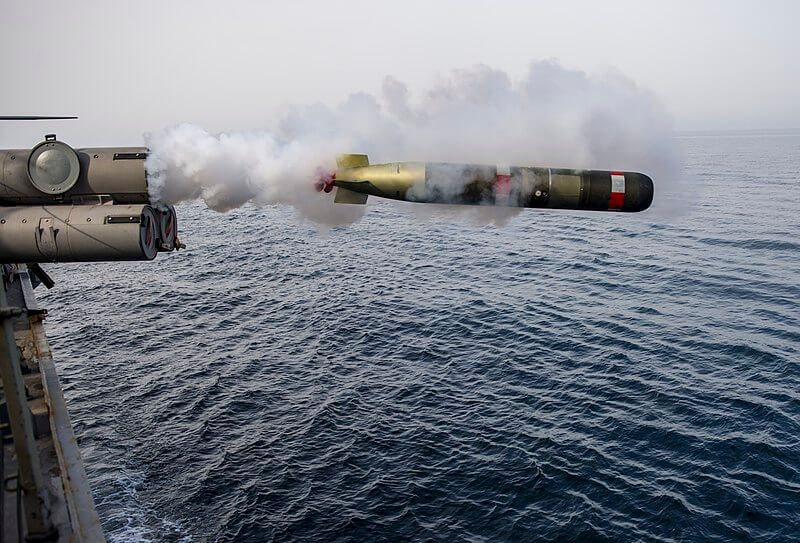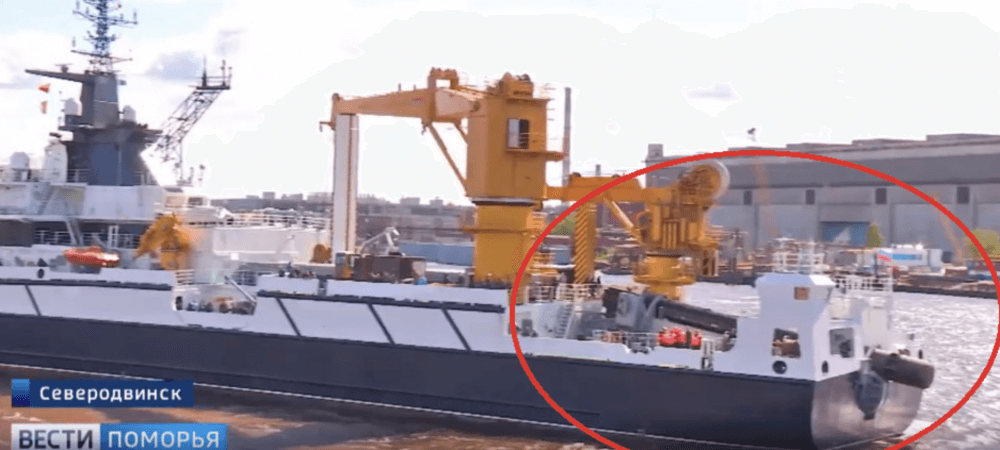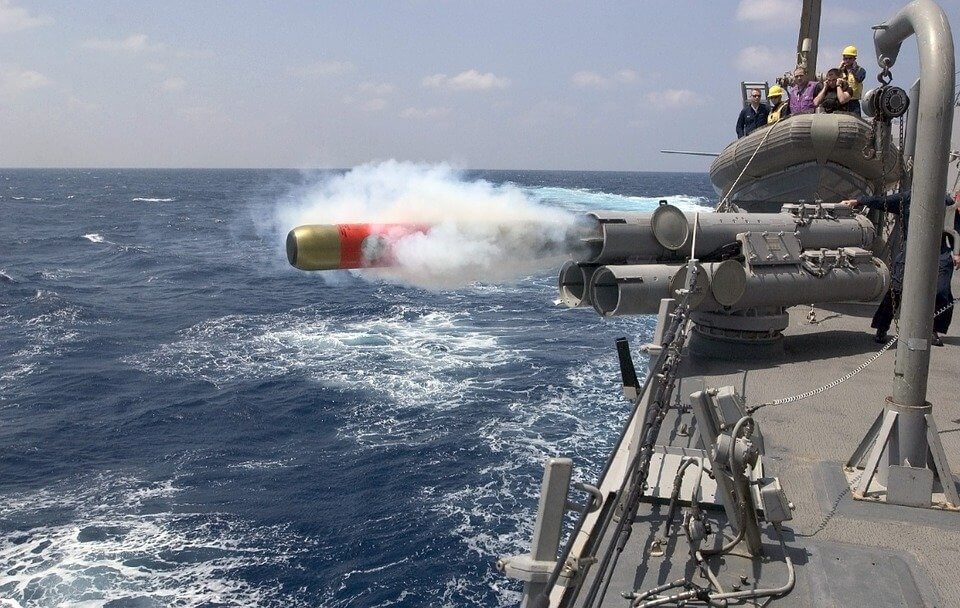
Make no mistakes Poseidon – the largest torpedo ever built by any country in the world is a giant killer. Here is what President Putin had to say:
“Unmanned submersible vehicles that can move at great depths (I would say extreme depths) inter-continentally, at a speed multiple times higher than the speed of submarines, cutting-edge torpedoes and all kinds of surface vessels … They are quiet, highly manoeuvrable and have hardly any vulnerabilities for the enemy to exploit. … Unmanned underwater vehicles can carry either conventional or nuclear warheads, which enables them to engage various targets, including aircraft groups, coastal fortifications and infrastructure.”- President Putin, 2018
President Putin announced a total of six new nuclear-weapon delivery systems in 2018 and 2019, namely: Sarmat, a multiple-warhead heavy intercontinental ballistic missile (ICBM); Burevestnik, a nuclear-powered cruise missile; Poseidon, a nuclear-powered torpedo; Kinzhal, an air-launched hypersonic ballistic missile; Avangard, a boost-glide hypersonic vehicle; and Tsirkon, a sea-launched hypersonic missile.
A weapon system that is designed to incapacitate an adversary’s economic, military or political power is labelled as a strategic weapon system. Such weapons invariably use nuclear warheads to rapidly degrade/destroy the enemy’s critical infrastructure, the seat of power and/or military assets/bases. The strategic weapon system encompasses the complete delivery system including communications which go towards ensuring a successful and reliable hit on the target.
Poseidon- nuclear-powered torpedo
“Small modular reactor (SMR)-based plants, both floating and onshore, open up a great sustainable development opportunity for the whole world,” – Nikita Mazein, Vice President of Rusatom Overseas

The Poseidon torpedo (Russian designation- Ocean Multipurpose System Status 6 and NATO designation Kanyon) is a strategic combat unmanned underwater vehicle with the capability of carrying a conventional or a nuclear warhead. It is claimed that eight such torpedoes can be carried by a nuclear submarine SSGN. The Poseidon with its nuclear propulsion and pump jet propulsor is expected to remain/loiter at its designated station for prolonged periods before carrying out strikes. The Poseidon torpedoes are likely to be carried by the Khabarovsk-class submarines. The dimensions of the Poseidon family of torpedoes would indicate that it is intended to attack large coastal installations/cities in its lower speed design or carrier battle groups in the higher speed capability.
The Poseidon torpedo would have to be fitted with a compact small nuclear reactor for its propulsion. The World Nuclear Association has defined small modular reactors (SMRs) as ‘Nuclear reactors generally 300 MWe equivalent or less, designed with modular technology using module factory fabrication, pursuing economies of series production and short construction times.’ These reactors are of a compact but simpler design and are amenable to serial production in factories. Russia has been developing SMRs for some time and has gained the expertise to manufacture compact SMRs suitable for meeting the diverse power requirements of the Burevestnik cruise missile and the Poseidon torpedo. It has been speculated that the August 8, 2019 incident at a sea platform (Nenoksa missile test site, Russia); involving blast and fire which resulted in an increase in radiation levels for a few hours; pertained to an accident during developmental trials of a compact SMR. Russia is developing a number of very small reactors some of them being; EGP-6 11 MWe, ELENA 0.068 MWe, ABV 3-10 MWe, MARS 06 MWe, Angstrem 06 MWe, MTSPNR 02 MWe, SAKHA-92 01 MWe, UNITHERM 6.6 MWe, SHELF 06 MWe.
The technical characteristics of the Poseidon have been gleaned from the media reports published in Russia and the Western press. The initial reports suggested a torpedo that could attain speeds of 130 kmph, with a range of 10000 km and an operating depth of 1000 m. The torpedo is supposed to be 24 m in length with a diameter of 1.6 m. Even though initially it was speculated that it could carry a >50 Mt nuclear warhead later reports zeroed on a ~2 Mt nuclear warhead. The smaller warhead appeared more likely to fit into the warhead cavity size of 1.5 m diameter and 4 m length. Open-source video analysis has indicated that the warhead would be placed in the front section with the nuclear reactor in the midsection of the torpedo. It appears that Russia is at an advanced stage of deploying the Poseidon in the next couple of years from its Khabarovsk-class submarines.

There are very few underwater weapons that can match the speed of the Poseidon. The Russian Shkval torpedo is a super-cavitating torpedo capable of speed in excess of 370 km/h. The Shkval weighs 2,700 kg, with a length of 8.2 m and a diameter of 533 mm. It can carry conventional/nuclear warheads and can strike targets up to 11 to 15 km range. The Khishchnik high-speed torpedo is being developed by The Elektropribor Design Bureau and is likely to replace the Shkval. No other details of the Khishchnik are available in open source. Diehl BGT Defense was developing ‘the Super-cavitating Underwater Running Body’ in association with the German Navy, but it is understood that it has stagnated at the prototype stage and has not gone into production. Iran has developed and deployed the Hoot torpedo which it claims can achieve a speed of 360 kmph and has fired it a number of times. Western experts surmise that it is a reverse-engineered Shkval torpedo. The US has also done trials of super-cavitating torpedo prototypes but has not produced them.
The announcement by President Putin in respect of the nuclear-capable weapon systems has been discussed at some length in the media. While the military objectives are understood to be targeting coastal cities and carrier battle groups, the strategic objective could be putting in place a stronger and survivable nuclear deterrence in case the Russian second-strike capability is under attack by the USA. The development of the nuclear-capable weapon systems could hold true especially since the New START regime would not permit additions to the ICBM capability while allowing development and deployment of the unmanned underwater vehicles. One aspect of deployment is clear that once Russia declares the presence of the loitering Poseidon torpedoes in the conflict zone, the adversary would get the message of a clear escalation possibility and would remain in doubt as to whether they are armed with conventional or nuclear warheads. One thing is clear that when President Putin announced five new nuclear-capable weapons in 2018, it was with an intention of signalling to the world that it continues to be a great power capable of designing and developing exotic weapons at par with the USA.
“The full ‘sensor to shooter’ functional chain of a hardkill surface ship torpedo defence system with torpedo detection, classification and localisation (TDCL) and the SeaSpider anti-torpedo-torpedo (ATT) has successfully been demonstrated on a surface ship,”- ThyssenKrupp Marine Systems, 2019
It is evident is that by the time the Poseidon becomes operational the western countries would have to come up with new weapons and/ or strategies to counter the Poseidon. This could spur the design and development of anti combat unmanned underwater vehicles (Anti CUUVs) on the lines of anti-submarine torpedoes ATTs. Some of the developed anti-torpedo systems include the German Sea Spider, the Russian Paket-E/NK weapon, a dual-use torpedo that can be fired against submarines and incoming torpedoes, the Turkish Tork hard-kill torpedo, and the U.S. “Anti-Torpedo Torpedo Compact Rapid Attack Weapon” system (under development). However, the capability to target weapons of the Poseidon type would require much more than re-engineering of ATTs to search, detect, identify and attack them since they would be required to match the speed and capabilities of the Poseidon.

